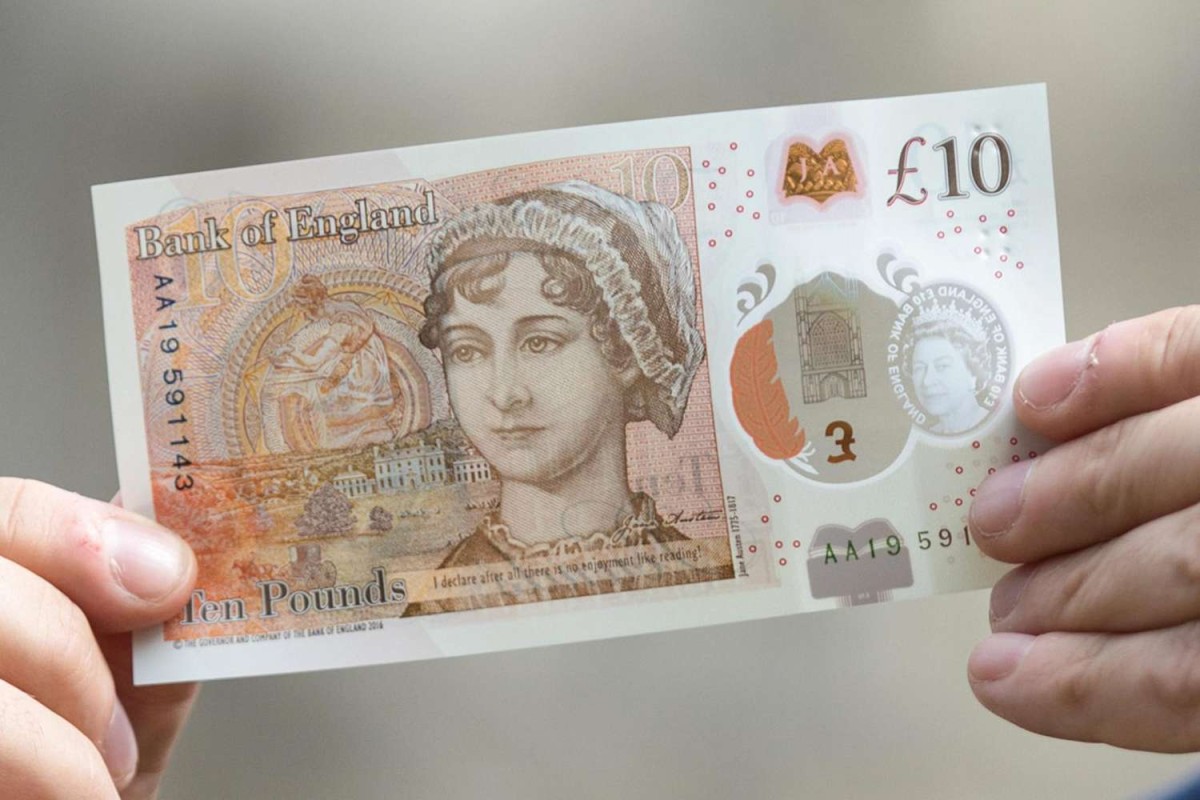Everything You Need to Know About The New £10 Note

A new tenner is now in circulation after its first major redesign for nearly 30 years, following on from the new £5 note and £1 coin, which were released last year.
The latest £10 note has undertaken a complete overhaul with a whole raft of new security features, a new face on the back of the note and, most strikingly, is manufactured from a brand new material.
For the new note, Charles Darwin has been replaced by 19th century novelist Jane Austen, marks the 200th anniversary of her death.
Similar to the £5 note, the tenner will be constructed from a polymer, rather than paper, and is said to last at least 2.5 times longer than the traditional paper versions whilst being 15% smaller than the £10 note we’re used to currently.
As with both the £5 note and £1 coin redesigns, new security and anti-counterfeiting features play a huge role, and the Bank of England have released a quick guide to ensure that you know what features to check to ensure you don’t end up with fake money.
10 Security Features of the New £10 Note
- A see through window with a portrait of the Queen and the words ‘£10 Bank of England’ printed twice around the edge
- A metallic image of Winchester Cathedral, gold on the front, silver on the back and multi-coloured when tilted.
- A coloured quill which changes colour from purple to orange when tilted
- Words in a foil patch on the front of the note change from ‘Ten’ to ‘Pounds’
- A foil patch with a 3D crown, changes to multi-coloured when tilted
- A book-shaped foil patch containing the initials JA
- Raised print around the number ’10’ and on the words ‘Bank of England’
- Ensure the printed lines and colours are sharp, not blurred
- Microlettering under the Queen’s portrait
- A red and green 10, which appears when using a strong ultra-violet light
You’ll likely see the new £10 note appear in circulation more frequently over the next few weeks, with the polymer and paper versions co-circulating until Spring 2018.
You don’t have to do anything with your paper ones as these will be phased out gradually, but if you still have any paper notes lurking around the house after they cease to be legal tender then you’ll be able to swap them at the Bank of England.
Verimaster anti-counterfeit additives for polymers
Our Verimaster additives can be implemented in masterbatch, liquid and powder forms and is suitable for all polymers, papers, textiles and paints & coatings, even when used in conjunction with other Addmaster products like Biomaster antimicrobial technology.
If you're looking to add anti-counterfeit properties, production process verification or covert identification techniques to your product range then contact us today.
Find out more about Verimaster HERE
← Back to blog
